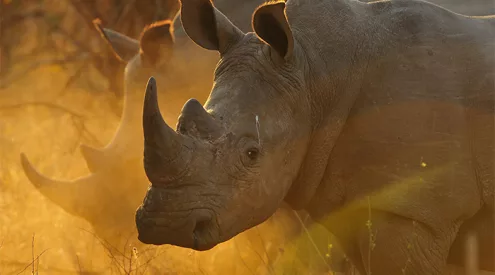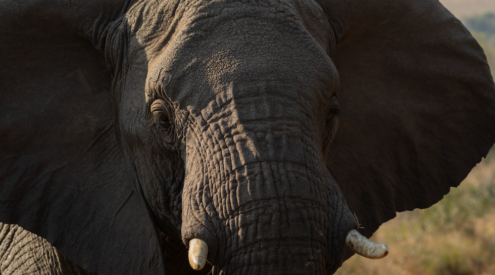Estimating the size of lion populations in any location is notoriously difficult, and no more so outside of protected areas. Various methods to count lions have been used to date in an attempt to produce reliable data upon which species management plans can be devised. In the past two years a particular method has been used in several countries by Philippe Chardonnet and others that has produced population estimates, in some cases, significantly higher than those suggested previously, including those previously put forward by Philippe Chardonnet himself. Are these higher numbers of lions a reality or just wishful thinking?
Well let’s take a look at one example.
In 2002 lion population estimates for Mozambique were presented in two studies: the first, by Philippe Chardonnet suggested that there were 955 (range 668 – 1242) lions in the country (Chardonnet 2002). The second study, which was not published until 2004, suggested 400 (range 240 – 560) (Bauer & van der Merwe 2004 – PDF 113kb). This is a pretty big discrepancy between the two studies I am sure you will agree.
Since these numbers were published field work within the Niassa National Reserve has discovered that lions are certainly more numerous than previously thought with between 800 and 1000 individuals living within the Park’s boundaries. If we update the 2002 figures with this new information from Niassa we get revised nationwide estimates of 1355 (range 1118 – 1592) for Chardonnet’s study and 1125 (935 – 1315) for Bauer & van der Merwe.
As you can see the estimates of these two studies are starting to converge as a result of this new information, such is the importance of the Niassa population for lion conservation in Mozambique.
But now jump forward to 2009 and Philippe Chardonnet and others presented a paper giving a new estimate of 2,709 for the country (Chardonnet 2009 – PDF 3.3Mb); double his previous estimate (after the revision for the more recent Niassa population). Where have these lions been found?
The simple answer is that they have not, but we have to consider whether it is reasonable to assume these additional lions exist in the absence of an actual census!
Chardonnet used a new technique in this recent study to estimate lion populations outside of protected areas. In locations where lions are considered likely to exist an expected density of lions has been suggested for those areas, and therefore, by knowing the amount of available land for lions, a “speculative” estimate of the lions in those locations can be added to data from actual lion counts that have been conducted in some areas using more traditional methods.
In 2011 we were given an opportunity to review these speculative estimates following the publishing of preliminary results from the Tete province. Chardonnet’s 2002 estimate for this region alone was 125 (range 87 – 163) with a density of 0.5 lions per /100km2. In the 2009 study this figure had increased to 507 (density of 0.55 lions / 100km2) of which 115 were “actual” estimates and the remaining 392 were “speculative” based on assumed densities ranging from 0.17 – 1.7 lions / 100 km2 in various locations within the region.
A survey (Van Aarde et al. in prep) conducted by Duke University under the National Geographic Big Cat Initiative found only 200 lions north of Lake Cahora Bassa, combining this with Chardonnet’s 2009 data for the area south of the Lake to bring a total of 259 lions in the Tete Province with a density north of the Lake of 0.77 and south of it of 0.43 lions / 100 km2.
So actual survey results seem to be showing that Chardonnet’s 2009 estimate using the speculative methodology has over-estimated lions within this region by a huge margin; 507 estimated vs 259 from counts .
So the question that arises is just how reliable is that speculative methodology which has now been used in Tanzania and Benin (and we assume elsewhere but not yet published) if the estimate from that ends up 95% higher than the actual number of lions based on counts? What impact does that have on the results nationwide? Is that 2,709 figure viable or actually could it be significantly less? These are big and important differences in how these populations are managed.
Accurate census information is vitally important to the proper management of lion populations but in the absence of anything better these speculative estimates are being used to define action plans for lions. With this apparent level of inaccuracy in estimates being presented (note: Chardonnet’s articles are not peer reviewed) ALERT has serious concerns as regards the decisions being made based on this information. I therefore urge anyone reading this post to support organizations making efforts to more accurately evaluate lion populations for the better management of the species.
At the moment we have to conclude that the idea that 2,709 lions live in Mozambique, already a low number, is fiction; nothing more than wishful thinking. The situation is likely much worse.
















